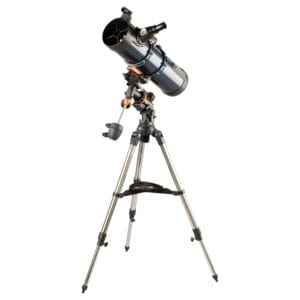2024 was an exciting year for astronomy and telescopes. Smart technologies, groundbreaking discoveries, and growing interest in stargazing have transformed the astronomy landscape. As we look ahead to 2025, let’s review the trends that defined the past year and look forward to what astronomy enthusiasts can expect.
Looking Back at 2024: What Surprised Us?
1. The Rise of Smart Telescopes
Smart telescopes, like the Vespera II, Vespera Pro, and Hestia, were the hit of 2024. Thanks to features like automatic alignment, stacking, and real-time image processing, these telescopes have become more accessible than ever, even for beginners.
Stargazing from urban areas, where light pollution is often challenging, became easier thanks to built-in light pollution filters and compact designs that work even on balconies.
2. Popularity of Astrophotography
Astrophotography has never been more popular. Social media was flooded with spectacular images of the moon, galaxies, and nebulae. Smart telescopes with built-in cameras, like the Vespera Pro, played a major role in this. Beginners could capture beautiful images with just one press of a button.
The technique of stacking became more mainstream, resulting in sharper and brighter images, even in less-than-ideal weather conditions.
3. Growth in Educational Astronomy
More and more people became interested in astronomy thanks to interactive apps and online platforms. Smart telescopes made this educational journey even more engaging by providing live information about observed celestial bodies.
Astronomy was no longer seen as a niche hobby but as an accessible activity for families, schools, and amateur scientists.
Looking ahead to 2025: What’s in Store?
1. Enhanced AI in Smart Telescopes
In 2025, the AI technology behind smart telescopes will be further refined. Models like the Vespera Pro and Hestia will be able to identify and track objects even faster and more accurately. These improvements will make stargazing even more intuitive.
Additionally, users may benefit from advanced star maps and personalized recommendations based on their location and weather conditions.
2. Greater Focus on Deep-Sky Objects
With improved stacking algorithms and sensors, smart telescopes will become increasingly better at capturing deep-sky objects like galaxies and distant nebulae. Even beginner telescopes will be able to deliver impressive images of these objects.
3. Rise of Portable Telescopes
With an emphasis on convenience and accessibility, portable telescopes like the Hestia will become more popular. These telescopes are ideal not only for city dwellers but also for travelers who want to take their telescope to dark locations.
4. Astronomy and Sustainability
2025 will also focus on sustainability. Telescope manufacturers will pay more attention to environmentally friendly production processes and reusable materials. This aligns with the broader trend of environmental awareness in consumer technology.
How Can You Benefit from these Trends?
The future of astronomy is more accessible than ever. Whether you’re a beginner wanting to observe stars from your balcony or an experienced astrophotographer looking to capture deep-sky objects, there’s a smart telescope for you.
- Start with a model like the Hestia for easy use and portability.
- Explore advanced astrophotography possibilities with the Vespera Pro.
- Visit our blog for tips on stargazing in the city or astrophotography for beginners.
- Want to take your setup to the next level? Create a stargazing paradise with, for example, a comfortable lounge set from Boenderoutdoor!. Need inspiration? Check out the garden inspiration guide from kampioenwebsites.
Conclusion: a Golden Age for Astronomy
2024 was a milestone year for astronomy, with innovative technologies and a growing community of stargazers. With 2025 on the horizon, this is the perfect time to invest in a smart telescope and join this exciting journey through the stars.
Discover the latest smart telescopes in our webshop and get ready to embrace the trends of 2025. The universe awaits you!







